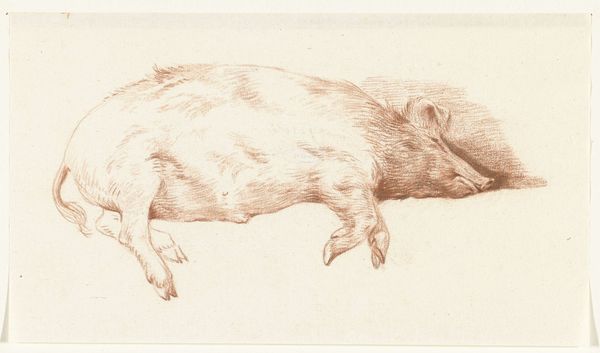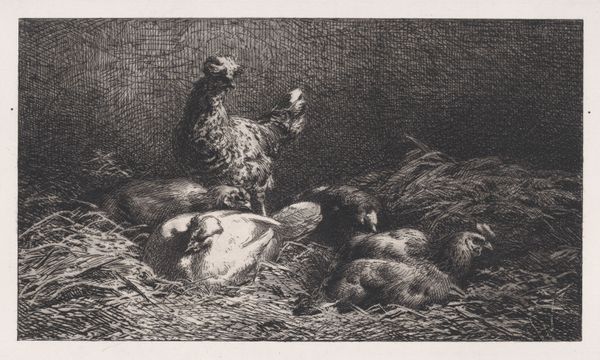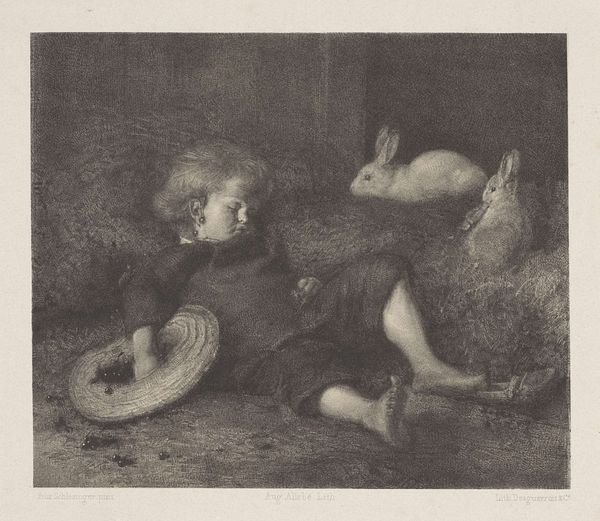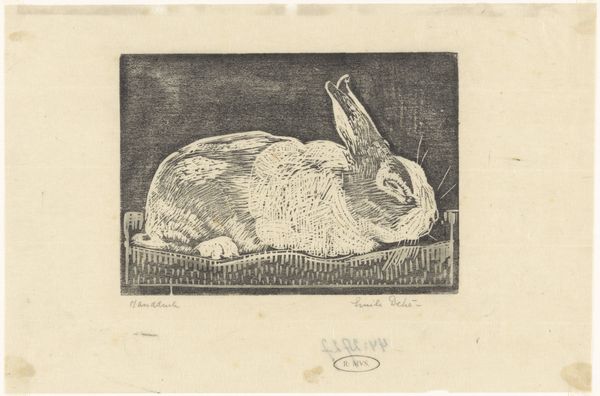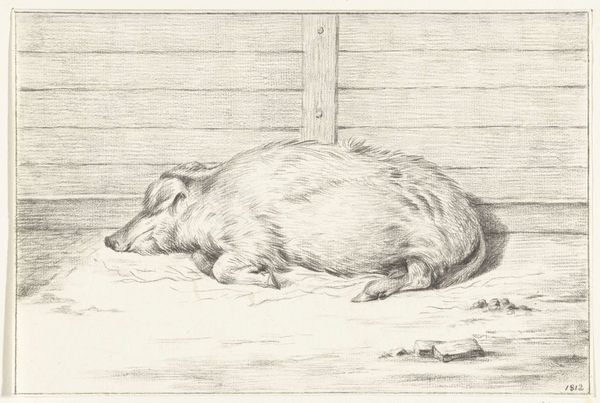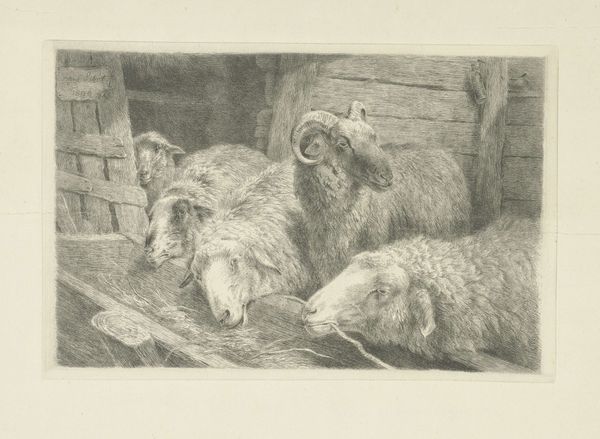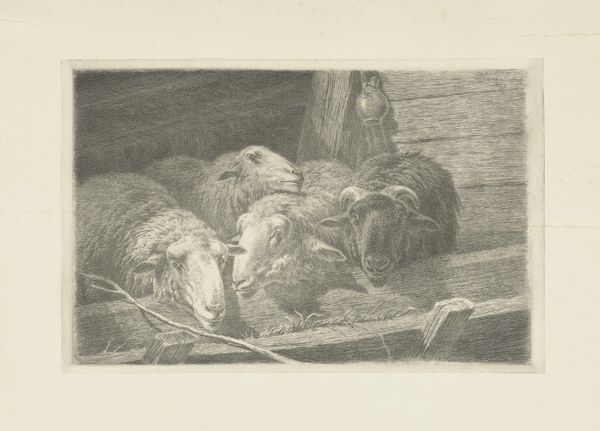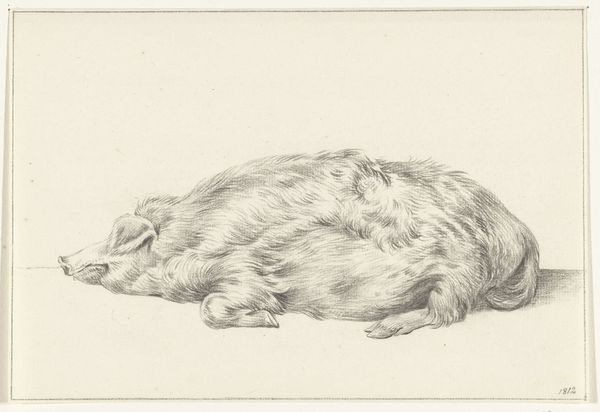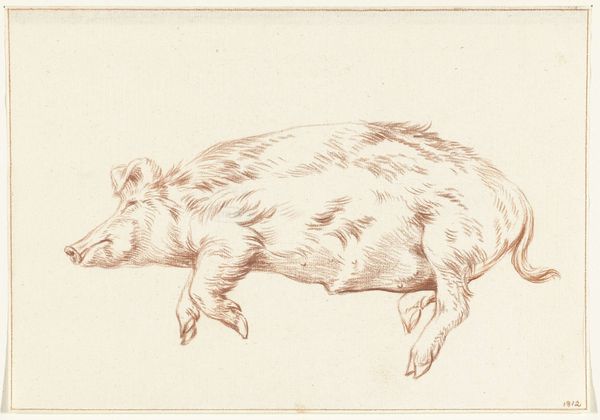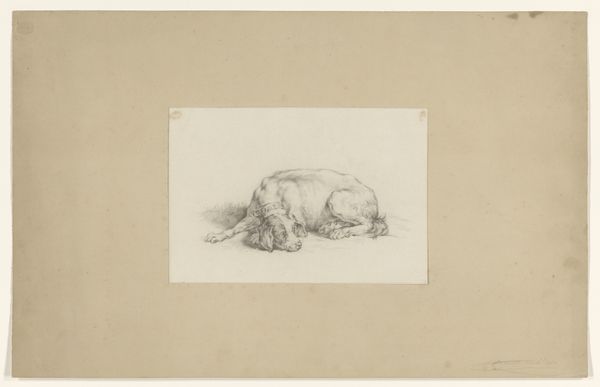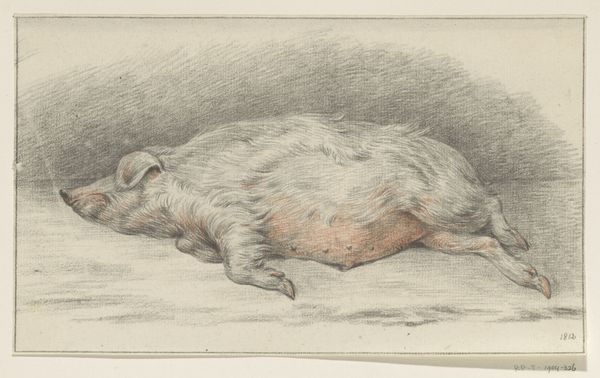
print, etching
#
animal
# print
#
etching
#
figuration
#
genre-painting
#
realism
Dimensions: height 161 mm, width 199 mm
Copyright: Rijks Museum: Open Domain
Curator: This etching, made by Carel Lodewijk Dake between 1867 and 1885, is titled "Zeug met biggen liggend in stal," or "Sow with piglets lying in a stable." Editor: The tight composition immediately gives me a sense of closeness, of warmth almost. It’s a dark piece overall, with a clear contrast in value between the dark background and the lighter forms of the pigs. Curator: Indeed, the chiaroscuro effect draws the eye to the main subjects: the sow and her piglets. The formal arrangement—the repetition of rounded forms, the textural variation between the animals and the hay—suggests a kind of bucolic harmony. It is, technically speaking, realism. Editor: Realism perhaps, but sanitized. I'm more drawn to thinking about what isn't shown. An etching like this requires metal plates, acid, ink… a significant amount of labour, contrasting the humble setting of farm animals. Where does the labour of producing these images of humble people fit in the bigger social picture? The material reality is obscured in the image. Curator: It’s undeniable that this intimate genre scene is idealized; it lacks explicit signs of labour but it contains signs of labor by depicting very natural forms using hard to manage and use materials.. And it is beautiful for it's delicate line work capturing details in fur, skin folds, and tiny hooves, giving a sense of both weight and fragility. This work allows for semiotic interpretations of the natural world. Editor: And what is the cultural significance of elevating agricultural labor into "art?" I cannot divorce these intimate portrayals from the economic landscape in which Dake operates. Etchings were popular prints, accessible forms of art made via a craft; it isn't divorced from the social and cultural. Curator: These considerations enrich our understanding, broadening the picture that Dake presents. It seems to be a reminder of life’s simple rhythms. Editor: It pushes us to think about our perception of work and its true complexities through visual representations that aestheticize everyday labor.
Comments
No comments
Be the first to comment and join the conversation on the ultimate creative platform.

